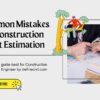Solar power is often associated with living off-grid, but surprisingly, there’s a lot more people installing solar panels on homes that are connected to the grid.
Let’s explore why people are installing solar at home, the basic components of a solar power system, installation options for panels, costs, and money-saving opportunities like net metering, and important considerations including some of the risks to keep in mind when going solar.
Table of Contents
- Residential Solar panels – But why?
- Goals for investing in Residential Solar Panels
- Off-grid or on-grid solar panel system – What are the components?
- What are the requirements for solar panel needs?
- Estimate energy consumption for your house
- The Power of Net Metering
- The Viability of Solar Systems
- Considerations and Risks
- The Positive Impact of Solar
- Cost considerations
- Choosing the Right Solar Panels for Your Home
- Real-Life Case Studies: Transitioning to Solar Energy

Residential Solar panels – But why?
The sun rises every day and it’s a guaranteed energy source. So as we transition to more electrically based infrastructure – heating, cooling, transportation, all of it – is going to need a renewable energy source and solar’s part of that solution. Solar is going to be able to deliver an infinite amount of energy; we just got to be able to capture it, harvest it, utilize it.
The reason why people invest in solar, cost savings is a big one.
They’re trying to insulate themselves from rising electrical costs or uncertainty of power or unreliable power. If you’re in a rural setting, people are trying to be more sustainable, so they look at solar and they go, ‘Well, I don’t need to do an extreme thing, I just have to add panels to my house and I’m going to continue to use electricity the way I normally do, but I’m going to get some sort of benefit from doing it.’
And the big one now I’m finding is that people are really looking and targeting batteries, and it’s because maybe the grid isn’t as reliable as they thought.
They’re more likely to have outages and the frequency is increasing, and the duration is increasing.
So solar plus battery and storage allows people to kind of continue to live their lives without that inconvenience of wondering, ‘Is my fridge going to last the next couple of days?
Do I still have access to water?’ And again, it really depends on where you live, whether or not that’s a big problem for you. But a lot of people are really interested in just trying to insulate themselves from that risk.
Reputable solar power companies Utah can guide them through installation, contributing to sustainability and potential energy bill savings. On a more personal level, solar panels can translate to substantial financial savings over time. By producing electricity, you effectively lock in your energy costs, making them predictable and more manageable as utility prices fluctuate. This energy independence can increase your property’s market value, providing a lucrative return on investment should you ever decide to sell your home. Implementing solar power also aligns with an enhanced sustainable living standard, an aspect increasingly crucial to the eco-conscious buyer.
Goals for investing in Residential Solar Panels
For a lot now, now a days the goal for investing in solar panels is to
protect environment and going green: Going all electric and removing fossil fuels from our electricity sources. We want to know where our power is coming from.
Security: Gaining some energy independence for situations like blackouts in winter storms.
Financial: We can save money on our utility bills and stabilize ongoing costs for home.
Overall, you can decrease your reliance on the grid by around 55-60%. That equated to about $1,500 a year in savings on electricity alone. The solar panel array is also a nice selling point for the buyer of old house. So what about our new house? It’s much easier to figure out how much solar you’ll need for a net-zero energy home if you’re actually living in it.
Off-grid or on-grid solar panel system – What are the components?
The opportunity when you’re grid-tied or off-grid, solar is going to provide you a benefit every day. It’s going to generate electricity.
You’re either going to use it, you’re going to sell it, you’re going to store it, you’re going to do something with it that’s going to give you a benefit.
So like basic components of the solar power system is you need a solar panel, that’s what’s actually going to take sunlight and turn it into power.
In order to get that power into a usable form, you need some sort of inverter and then you need a racking system.
So you would need those three pieces. If you’re grid-tied, you might need some additional electrical components and as more and more batteries come to market, there’s more and more opportunity to couple a solar panel and an inverter to a battery system to further get more utility and have more benefit.
For residential, the most common types of installs are roof mount because they have existing infrastructure that can support panels.
So it’s facing south or east or west, or ground mounts. And that usually just comes down to viable space. So both have their pros and cons, but pretty much every residential customer starts with, ‘I’d like to add solar,’ and we look at what existing infrastructure can be best utilized to achieve those goals.
What are the requirements for solar panel needs?
Roofing requirements
As far as requirements for like a roof mount, solar can go on asphalt shingles, tiles, shingles, clay tiles – literally, the racking system exists that you can build on any roof.
So there really aren’t too many limitations as far as what kind of roofing type. But you typically want a roof that’s in good condition.
So kind of from day one, you want to determine is this roof going to outlast potentially the performance of the solar system? If not, if there are ways that I should mitigate that cost now, you might want to reshingle if the shingles are showing their age.
A lot of these components are fixtures so they can be removed but there is costs associated with installing and uninstalling something that’s functioning to replace the infrastructure below it so you want to avoid that cost because it eats into the economics of doing the project.
Ground mounts are fantastic from a standpoint of installing. It’s safer, it’s easier to maintain, it’s easy to do inspections on and the big one is you get a bump in production.
So when we put a solar system in that’s on the ground, you can point it in the right direction and have it at the right angle if you can adjust the angles seasonally because the sun changes in the horizon you can further optimize the worst times of the years and the best times of the years when the sun is overhead so your production numbers increase so now you need less infrastructure to produce the same or more energy. But it might come with some additional costs because now you’re building the infrastructure for a ground mount whereas before you were just using a garage roof or a house roof there is a market for off-grid people there is a community of people that want to be independent but we think that there’s more opportunity and more benefit if we’re able to offer solar to a much bigger demographic.
Estimate energy consumption for your house
In the first step you need to learn how much you’re spending on electricity and what size of solar panels you require.
You can learn a lot from the electric panel of your house. Typical usage of electricity in a house included computers, TVs, EV charging, and other things like heat pump HVAC system, water heater, and appliances.
For all of this, you can use the Energy Star labels, which estimate yearly energy use and costs. For HVAC and hot water, you can use manual J estimates that a mechanical engineer can put together. I recommend using a spreadsheet calculating all this up.
At the end of the day, you need rough monthly average estimate we needed to hit for 100% net-zero energy production over the course of a year. And no, this doesn’t mean being off-grid, in most cases this is not the goal.
In the dead of winter, the solar production will be too low to be off-grid, but in the middle of summer, you’ll be producing more energy than need. Net metering credits roll over month to month, so it will (in theory) even out over the course of the year for kWh in versus out.
In the case of my house, we went with 43 REC Alpha 400 panels (these are 400 watts each), which means a total system size of 17.2 kW. For comparison, my old house had 26 365-watt LG panels for a total of 9.49 kW and roughly 7,000 kWh/year. This new setup is capable of producing about twice what the old one was capable of, but unlike the old one, this new house is situated better.
The better angle of the panels and less shading means we’re getting better performance out of each solar panel. We have several large roof areas that face in a southern direction with no shade. And we have a small number of panels on the front of the house that face almost due west to capture some of the last light in the afternoon and evening. It’s estimated that we’ll produce almost 18,000 kWh/year (17,998 kWh to be exact). Much better performance than the old house.
Since this is our forever home we went with a metal roof, which should last 50+ years and outlast the solar panels. Best part is that you don’t have to nail or screw through the metal roof to install the panels. Unless one of the carpenters working on your house accidentally drives a screw through your brand new metal roof.
The Power of Net Metering
There are more people connected to the grid than off-grid, making net metering the most popular program. With net metering, you remain connected to the grid but generate as much energy as you use over the year. In the summer, excess energy is credited, and in winter, you draw from this credit when needed. Systems are designed to target a hundred percent offset, with incentives for surplus generation.
The Viability of Solar Systems
In recent years, solar panel prices have dropped significantly, making solar energy more accessible. Coupled with decreasing battery costs, generating low-cost renewable energy has become feasible. Solar systems, combined with batteries, offer functionality even during power outages, providing a reliable energy source.
Considerations and Risks
While solar systems have long lifespans and minimal moving parts, there are still risks to consider. Snow or debris may affect panels, and proper installation is crucial to mitigate these risks. Structural assessments and permits ensure safe installation. However, with the right installer, the risk is minimal, and solar energy can benefit anyone with the capacity and resources to invest.
The Positive Impact of Solar
Installing solar not only benefits individuals but also the environment. By reducing reliance on traditional energy sources, the world becomes a better place. Sharing successes with neighbors spreads awareness and encourages others to consider solar energy for their homes.
Cost considerations
The costs associated with solar panel installation can be intimidating at first glance. A complete setup for your home involves several components—the panels themselves, inverters, batteries, and more—all contributing to the initial expense. However, this should be weighed against the potential for long-term savings on energy bills, which can eventually eclipse the upfront investment. Government incentives and tax credits are available to encourage the transition to solar, effectively lowering the cost barrier. For instance, the USA’s federal solar tax credit allows a substantial percentage of your solar installation costs to be deducted from your federal taxes. A close analysis of these factors shows that solar panels are an increasingly affordable option, as seen in the downward trend of prices over the past decade. Understanding this economic dynamic is essential, and resources such as the Energy Information Administration provide valuable insights into the industry’s financial landscape.
Choosing the Right Solar Panels for Your Home
With the growth of the solar industry, the market is flush with options, making the decision process for homeowners more complex. Solar panels come in various forms, such as monocrystalline, polycrystalline, and thin-film, each with advantages and price points. Homeowners must consider factors like efficiency ratings, which directly affect how much energy can be generated from sunlight. High-efficiency solar panels can be more costly but may require less space and yield better performance over the long term. Climate also plays a pivotal role, as certain panels perform better in specific environmental conditions. Therefore, it’s crucial to understand your regional weather patterns and how different types of panels withstand elements like snow, wind, or high temperatures. Fortunately, knowledgeable companies specializing in solar power can provide consultations based on individual needs, ensuring your investment is tailored to your home’s specific requirements.
Real-Life Case Studies: Transitioning to Solar Energy
The shift towards solar is not just about data and statistics; it’s reflected in the stories of everyday people transforming their homes and lives. Homeowners from various backgrounds have embraced solar energy, reaping its benefits in different climates and community settings. These real-life examples provide tangible insights and encouragement for those on the fence about making the switch. By sharing their experiences, these pioneers of residential solar energy emphasize the practicality of their choice and the sense of empowerment that comes from taking control of one’s energy source. They illustrate that while the upfront costs can be substantial, the long-term savings and environmental benefits offer a compelling case. As illustrated by studies like those from the Energy Information Administration, the impact of these individual decisions contributes to broader economic outcomes and industry growth.
The decision to install solar panels is a significant commitment to your home and the environment. By understanding the long-term benefits, navigating costs and incentives, and undertaking a streamlined installation process, you can gain a robust, renewable energy system that saves money and contributes positively to the planet. The knowledge garnered from this guide should serve as a foundational step toward harnessing solar energy for a bright and sustainable future.




















